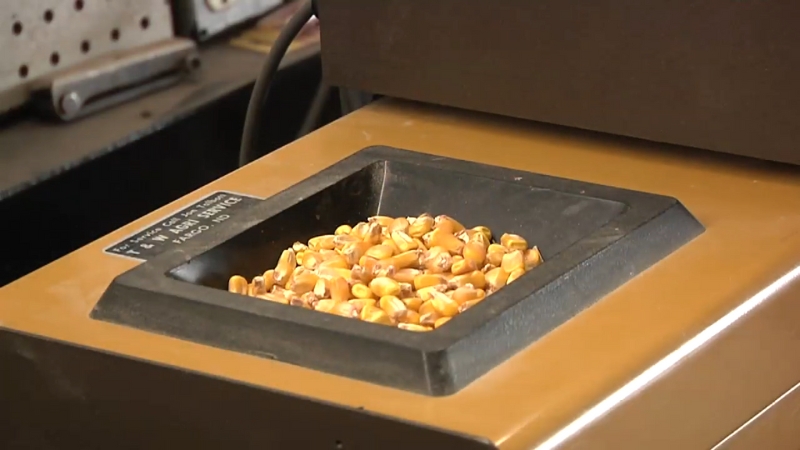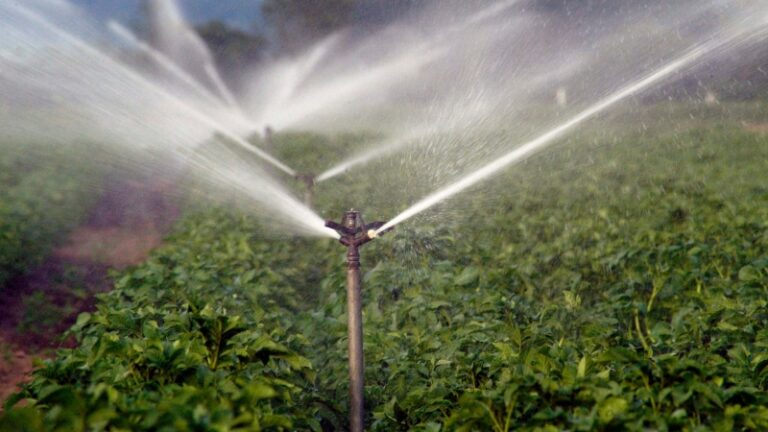The old grain elevator operator once told me, “Son, until you know what a bushel means, you’re just playing at farming.” I thought I understood. I didn’t.
A bushel is more than 32 quarts or 8 gallons. It’s agriculture’s universal measure, the heartbeat of farming that ties planting to harvest and local fields to global trade.
The True Meaning of a Bushel
According to USDA standards, a bushel equals 2,150.42 cubic inches. Yet every farmer knows that volume alone tells only half the story. A bushel can mean success or failure, profit or loss, depending on weight, quality, and timing.
When I walk through fields in late summer, I see each corn plant as one-twentieth of a bushel. Multiply that by hundreds of acres, and the scale becomes clear. For farmers, bushels are the language of yield, storage, and marketing.
Dr. Robert Nielsen of Purdue University notes that the bushel has evolved from a medieval English unit into the backbone of agricultural commerce. Its consistency gives farmers stability in a volatile world.
Why Weight Matters More Than Volume
One of the first lessons I learned was that a bushel of corn doesn’t weigh the same as a bushel of oats. Volume stays fixed, but weight defines value. Mistakes can be costly.
Early in my career, I filled an oat bin as if it were corn. The lighter grain flowed differently, and the equipment failed. The repair bill taught me that weight standards matter as much as yields.
Standard Crop Weights
- Corn: 56 pounds per bushel
- Wheat: 60 pounds per bushel
- Soybeans: 60 pounds per bushel
- Oats: 32 pounds per bushel
- Barley: 48 pounds per bushel
- Rice: 45 pounds per bushel
These numbers, unchanged for generations, shape everything from storage engineering to market pricing. A heavier test weight often signals higher quality and better nutrition.
Lighter grain often means stress, lower value, and shorter storage life.
Beyond Simple Counts: Quality Factors

Two farmers can deliver the same number of bushels and get very different checks. Why? Because elevators don’t just measure volume or weight – they test for quality.
- Test weight: Denser grain earns premiums.
- Moisture: Corn must be at 15.5% or less for safe storage. High moisture means discounts.
- Protein: Wheat with higher protein levels can command 20–30 cents more per bushel.
- Condition: Damage, foreign material, or poor kernel fill cuts into value.
I once delivered corn at 54 pounds per bushel instead of the standard 56. The dockage was 10 cents per bushel.
Multiply that by thousands of bushels, and the cost of poor conditions becomes painfully real.
Technology Reinventing the Bushel
When I started farming, scales and guesswork ruled. Today, yield monitors, GPS, and precision ag tools give real-time bushel counts. Combines now to map yield variation across fields, exposing soil or drainage problems that were once invisible.
One year, my yield monitor showed a corner producing 40 bushels per acre below average. Soil tests revealed compaction. With targeted tillage, yields rebounded the next season. Bushel data guided the fix.
At the elevator, automated scales and sampling make transactions fast and accurate. Apps track storage, sales, and market prices. Farmers now use mobile alerts to time sales and maximize returns.
The Economics of Bushels
Behind every bushel lies a business decision. Should you sell at harvest, store for spring, or contract early? The wrong choice can erase profits; the right one can add 20 cents or more per bushel.
Storage gives flexibility but brings costs: bins, drying, interest, and the risk of spoilage. I once stored 50,000 bushels through winter. Prices rose by 40 cents, but 2% spoiled, and storage ate 8 cents per bushel. Net gain – yes, but only because I managed carefully.
Marketing follows seasonal cycles:
- Harvest: Prices are usually lowest.
- Winter: Gradual recovery.
- Spring: Stronger as supplies tighten.
- Summer: Often seasonal highs, but storage risks rise.
Premium contracts – organic, non-GMO, or identity-preserved crops – can add dollars per bushel, but demand careful handling and record keeping.
Local Fields, Global Impact
Every bushel harvested doesn’t stay local. Corn from Iowa may feed cattle in California, fuel cars in Minnesota, or end up as feed in Asia.
According to the U.S. Grains Council, America exports over 2 billion bushels of corn yearly. Each load must meet strict standards abroad.
I once hosted Japanese buyers who required corn with precise toxin levels. Meeting their specs meant changes in handling, but the premium prices justified the effort.
Weather creates ripple effects across the globe. Drought in Argentina can raise soybean prices in Illinois. Excess rain in the Black Sea shifts wheat markets in Kansas. Global food security depends on consistent bushel production in every region.
The Future of Measuring Bushels

The bushel as a unit will likely endure, but technology is transforming how it’s managed.
- Blockchain: Could trace bushels from field to consumer, rewarding transparency.
- Artificial intelligence: Already predicts yields and optimizes sales timing.
- Precision agriculture: Variable seeding, fertilizer, and irrigation now boost bushels per acre by 10–15%.
Satellite imagery, soil sensors, and mobile apps combine to give farmers insight once unimaginable.
Practical Wisdom That Lasts
Experience teaches that chasing perfect conditions is futile. Success comes from consistency, record keeping, and soil care.
Detailed logs reveal which fields outperform. Soil health practices – cover crops, diverse rotations, less tillage – add resilience and steady gains of 10–15 bushels per acre. Over the years, that difference sustains profitability.
Above all, bushels are not just numbers. They represent choices, weather, and work. Each bushel holds a season’s story: spring hope, summer risk, autumn reward.
Conclusion
@grow.farm.solutions Step by Step on how to calculate your bushels per acre! #farmtok #foryoupage #relatablecontent #tutorial #crops #farmer #agriculture ♬ original sound – Grow Farm Solutions
The old elevator operator was right. Truly knowing what a bushel means takes more than memorizing weights and measures. A bushel connects farms to families, local harvests to global markets, and soil to sustenance.
Every bushel measures both yield and resilience. It embodies the promise that with care, stewardship, and favorable weather, the land provides.
For new farmers, the path begins with mastering the basics – weights, storage, and quality factors. For seasoned farmers, the wisdom comes from years of records, soil care, and adaptation.
So when someone asks, “What is a bushel?” remember: it’s more than 32 quarts. It’s agriculture’s constant – an enduring measure that binds tradition to progress, and farms to the world.








